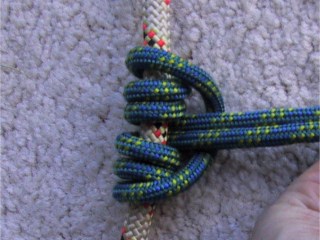What is Barefoot Running?
There is madness sweeping the nation. Can you feel it? What I'm talking about is the barefoot running craze that has taken hold of the running world and planted roots right into its face.
In the 60's, shoes started to get more padded. In the 60's, Abebe Bikila also set a world marathon record barefoot. It just so happens that the highly padded, technical shoes took the spotlight and became wildly popular. So, for the last fifty years, sports shoes have become more padded and more technical.
Now we have things like Sketcher's Shape Ups with wild amounts of padding and sole material pushing 2-3" of foam rubber between your foot and the ground. These shoes are supposed to be developed by careful scientific testing and studies to work in perfect harmony with your body so that walking doesn't inflict pain. I, personally, find them ridiculous.
In the last couple of years we've seen minimalist (barefoot) running come into the mainstream as well, though. Vibram's Five Finger shoes have exploded as a fad almost as popular among runners as Pokémon was among ten year olds. All of a sudden, really out of no where, barefoot running is being hailed as the running miracle. It's better for your body, healthier, less injurious, more back to earth, find your soul, be-one-with-the-earth kind of stuff. It really has the word "fad" written all over it.
So now we come to the crux. Where shoes padding is so extreme we get Sketcher's Shape Ups, but also so minimal that we get Vibram's Five Fingers. It's as if the silent battle between padded footwear and minimalist footwear has reached an peak of extreme differences. Now we just have to see which way the dice fall. Either we're going to see ultra-padded shoes lose popularity, or we'll see minimalist shoes take over the market as the new dominant footwear. I really don't think we'll see them coexist.
So how ridiculous is Barefoot Running?
It's actually a really cool idea. I totally support going "back to the roots" and running as our human ancestors must have hundreds of years ago when foam padded shoes didn't exist. A buddy of mine always used to walk around and run without shoes during the summer just to spite the "Man" and do something natural. I totally support that cause!
However, barefoot running today has become a marketing ticket. Barefoot running in today's craze means buying a pair of $80+ shoes (that's right, you need shoes to be a barefoot runner). The ultra-thin-soled Vibram Five Fingers (VFF) are hailed as the ultimate "barefoot" running shoe. I think you can all see the irony in that statement.
Why do people turn to barefoot running to change their running and health lifestyle, and then go buy a pair of shoes for it? I DON'T KNOW!!! I don't get it at all. From all the reading I've done, and all the recent articles and posts about barefoot running, everyone suggests starting slowly in your transition to barefoot running. Which means they suggest you wear VFF's for a year and slowly work up your distance and speed again as if you're learning to run all over.
Can I spoil this quaint little marketing scheme? Vibram is raking in millions of dollars off of "barefoot" runners who switch to VFFs. I love the VFF shoes, have a pair myself. However what I don't like is that people who want to barefoot run are going
through these shoes. You don't need a pair of shoes to start barefoot running! In fact, it probably makes the transition take longer and be more drawn out then necessary.
Here's Casey's Barefoot Running Plan (that doesn't require you to buy and shoes, DUH!!!)
Week one:
Keep your normal running plan with normal shoes.
Add walking for twenty minutes a day on concrete barefoot.
Week two:
Continue normal running plan.
Fast walk for thirty minutes a day on concrete barefoot.
Week three:
Continue normal running plan.
Run 10 minutes a day on concrete barefoot.
Week four:
Continue normal running plan.
Run 15 minutes a day on concrete barefoot.
Get the idea? You might even want to just keep walking on concrete or asphalt, adding more miles every week for a few months until your feet build up the calluses. Oh, and by the way, don't get a pedicure and scrub off the calluses! They're there for a reason!!!
Disclaimer: My running plan was made up on the spot for the purpose of demonstrating the idea that slowly working up walking and running miles on concrete while barefoot
in addition to your running plan can avoid the need for "barefoot" running shoes. Also, don't get pissed at me if your dumb self steps on a broken bottle. Yes, glass is harder than your feet ever will be.
What I'm really trying to say is: running barefoot doesn't require you to buy a shoe.

















